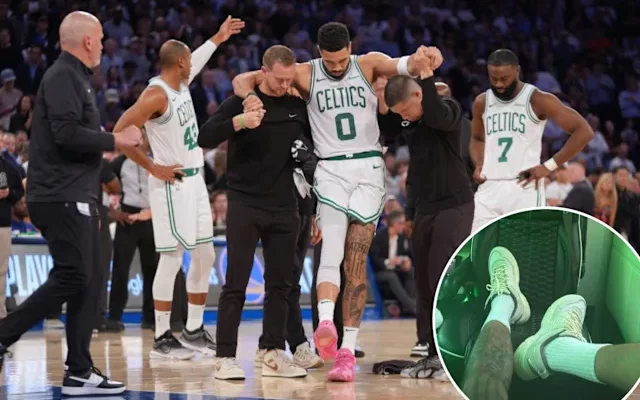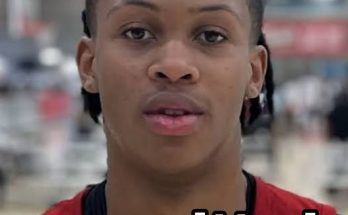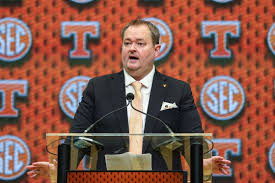There’s something about resilience that defines champions. For Jayson Tatum, that resilience has never been in question. But as he continues to recover from the injury that temporarily cast a shadow over the Boston Celtics’ title ambitions, his journey back to form is becoming more than just encouraging—it’s inspiring. Tatum’s recent signs of progress aren’t merely about his physical health; they’re also a reflection of his relentless work ethic, mental toughness, and leadership on and off the court. In Boston, where basketball is more religion than pastime, seeing their franchise star return with fire in his eyes is all the fuel fans need to believe again.
Tatum’s injury, which initially sparked anxiety across Celtics Nation, occurred during a pivotal stretch of last season. His body, worn from a brutal schedule and deep playoff runs over the years, gave out at the wrong time. For a moment, it felt like the Celtics’ championship window might be slipping—despite a loaded roster and one of the most versatile lineups in the league. But for those who know Tatum, surrender isn’t in his DNA. His road to recovery began with quiet determination, shielded from the glare of the media, behind closed gym doors, ice baths, and therapy sessions. He didn’t need to say anything. His actions were loud enough.
Now, as summer workouts ramp up and Boston prepares for another campaign with championship expectations, the reports filtering out of Tatum’s camp are overwhelmingly positive. Trainers have noted a marked increase in strength and mobility in the injured area. Conditioning has taken a front seat, and insiders have described Tatum’s current form as the best it’s been since his early All-NBA seasons. Video clips from private workouts show a fluid shooting motion, crisp footwork, and that signature midrange fadeaway that has punished defenders for years. He looks confident. He looks driven. Most importantly, he looks healthy.
What sets Tatum apart isn’t just his skill set—though that’s elite—it’s the way he attacks adversity. Ever since he entered the league, Tatum has carried himself with a poise that belies his age. Whether it was taking on LeBron James in the Eastern Conference Finals as a rookie or handling the pressure of being the franchise cornerstone in a city that breathes basketball, he’s never wavered. This injury, and the path back from it, has only added another layer of steel to his mindset. Close sources within the Celtics’ organization have pointed to a renewed intensity in his demeanor—more vocal in team meetings, more engaged with younger players, and more aggressive in demanding excellence during training sessions.
While some superstars might shrink from leadership roles during recovery, Tatum has embraced it. He’s often seen courtside during summer league games, mentoring the Celtics’ rookies and prospects, offering guidance and feedback, being present. That kind of leadership matters. It signals to everyone in the organization that the mission hasn’t changed. Banner 18 remains the goal, and the path to it still runs through him. For a franchise like Boston, history isn’t just honored—it’s expected to be continued. And Tatum understands that weight better than anyone.
There’s also the matter of chemistry. The Celtics’ offseason moves have placed even greater importance on Tatum’s return to form. With Jaylen Brown now more emboldened after finally silencing critics with a stellar postseason run, and Kristaps Porziņģis aiming to stay healthy and dominant in the frontcourt, Boston’s core is arguably as balanced as it’s ever been. But Tatum is the glue. He’s the versatile wing who can slide between positions, score at all three levels, rebound, facilitate, and defend. Without him at his peak, the machine doesn’t run smoothly. With him firing on all cylinders, however, Boston becomes a nightmare matchup for every team in the league.
The league knows it too. NBA players and pundits alike have taken notice of Tatum’s comeback trajectory. Several players have commented on his offseason grind, noting how sharp he looks during runs and workouts. While others are vacationing or easing into the offseason, Tatum’s been outworking almost everyone. It’s the kind of mindset that championship teams are built around. That’s what makes the Celtics’ title window so compelling. It isn’t just about talent. It’s about culture, preparation, and hunger. Tatum is setting the tone.
Injury recovery isn’t always linear. There are setbacks, plateaus, days where the body refuses to cooperate. Tatum has faced all of that. But the positive signs are now stacking up. He’s reportedly pain-free in recent drills. His burst, which was slightly diminished during the latter part of last season, has returned. The lift on his jump shot is back, and he’s finishing through contact again. These might sound like small details, but for elite athletes, they’re the building blocks of confidence. Every dunk, every clean step-back, every sprint without discomfort is a mental win. And Tatum is stacking them.
Perhaps what’s most exciting for Boston fans isn’t just the recovery, but what this version of Tatum could be. If this adversity has pushed him to evolve, to improve his conditioning, refine his mechanics, and embrace leadership even more fully, then the rest of the league might be in trouble. Tatum at 90% was already a problem. Tatum at 100%, locked in and hungry, could be the league’s MVP. And yes, that conversation is back on the table. While names like Jokic, Giannis, and Luka will always dominate headlines, Tatum has quietly stayed in the hunt. With a full, healthy season and another deep playoff run, his résumé could become undeniable.
The Celtics know this, too. That’s why they’ve tailored the offseason training program around giving Tatum every resource he needs to not just recover, but explode out of the gate. Nutrition, biomechanics, mental coaching—it’s all part of the plan. Boston is all-in on this group, and that starts with their star forward. Tatum’s salary might be steep, but it reflects his value. He’s not just a player; he’s a system, a belief, an identity.
Beyond the hardwood, Tatum’s presence is being felt more than ever. His commitment to community work in Boston and St. Louis has deepened. He’s become a visible advocate for youth programs, education, and social justice initiatives. He’s understanding more fully the role he plays in shaping the next generation, both as an athlete and a public figure. This, too, is part of his recovery—a holistic return to being the force of nature that took the league by storm just a few seasons ago.
The Celtics are counting on it. The city of Boston is ready to rally. And if the early signs are any indication, Jayson Tatum is on track to not just return—but to return better. Stronger. Sharper. More dangerous. These aren’t just hopeful projections; they’re observations based on what those closest to him are seeing every day. The hesitation is gone. The form is coming back. And that Tatum scowl—that unmistakable look of locked-in determination—is back in full.
What comes next is the most exciting part. Training camp will offer the first real glimpses of just how far he’s come. Preseason action will reintroduce him to opponents. And once the regular season begins, the test will be whether he can sustain it through the grind of 82 games. But based on every sign so far, that question seems less about doubt and more about anticipation. Celtics fans aren’t wondering if he’ll be ready. They’re counting down the days until he proves it.
Jayson Tatum’s story has always been one of growth—from promising rookie to All-Star, from playoff scapegoat to battle-hardened leader. Now, after facing the first truly significant injury setback of his career, he’s writing another chapter. One about perseverance, evolution, and unfinished business. Boston has the pieces. The East remains a battlefield. And if Tatum continues trending upward, there’s no telling how high this team can climb.
What’s certain is this: Jayson Tatum is back. And he’s not just playing to return. He’s playing to win it all.



